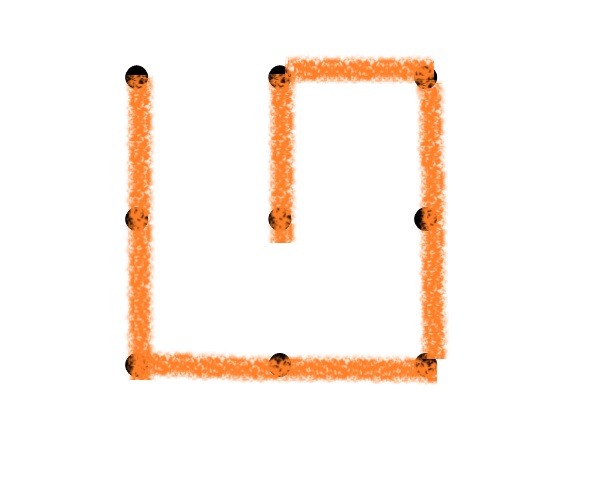“Constraints inspire creativity.” — Christopher Isaac “Biz”Stone, co-founder of Twitter
I once asked a young engineer if he knew where the phrase, “Think Outside the Box,” came from.
“Taco Bell?” he replied tentatively.
I asked a few of my other younger colleagues and to a person they had no idea where the phrase came from. As far as they were concerned, it could have come from the boxing ring, the packaging for Fruit Loops, or televisions before flat screens. They knew what it meant, though, and were fervent in their support of the idea for which it was a metaphor: that innovation was paramount and that we should all be seeking disruptive technologies.
The Nine Dot Puzzle
I first encountered the phrase, “Think outside the box,” at a management seminar for technical types that I attended in the early 1980’s. At one point in the seminar, we were divided into groups of three (why groups of three, I don’t know) and told to draw nine dots in a three-by-three matrix. Then we were instructed to figure out a way to connect all of the dots with as few lines as possible, drawing the lines without lifting our pencil. We ended up with several versions, each drawn with five lines, and settled on the one shown above.
When the facilitator polled the groups, each one reported that they were able to connect the dots with five lines.
The facilitator laughed. “You are all such engineers, trapped by your perceived constraints.” He announced that it was possible to connect the dots with just four lines, and then went to his flip chart and proceeded to draw this figure:

Over the objections of some and the murmurs of assent from others, he pronounced that we all had to learn to “think outside the box.” With that, he dismissed us to a lovely buffet lunch and told us that we would start again in 30 minutes.
Thinking Outside the Box
At lunch, some were annoyed, some felt duped, but many were intrigued. At my table, someone asked,“So, are we constrained to use Euclidean geometry? Because in projection geometry, parallel lines intersect at infinity.”
“Yes,” someone else responded gleefully. “Three lines are enough.
Another person at the table, dabbing at the salad dressing that he had dripped on his too-wide tie, offered, “Are we constrained to treat our dots as infinitely small mathematical points, or are they dots with scale and dimension? If that’s the case, we don’t need non-Euclidean geometry. We just need a bigger sheet of paper.” Then, on the back of an envelope, he drew this:

Someone else at our table asked, “Are we constrained to draw straight lines? Because if the line can curve, we can connect all the dots with just one line in the shape of a big figure S.”
Well, my lunch companions were having none of that. They explained in no uncertain terms that curves were not lines at all, that using a curve completely violated the premise of the puzzle. “What the hell are you thinking.” Apparently, even thinking outside the box has constraints.
Testing Assumptions
The thing I remember most vividly from that exercise is that all of the alternate solutions to the nine dot puzzle required that we go outside the box. However, while our solutions went outside the box, that wasn’t where our thinking went. Our thinking went to the assumptions we had made about the constraints, about what we had assumed was true.
- First, we had assumed that we needed to stay inside the box, a constraint from which the facilitator freed us.
- Second, we had assumed that we needed to construct a solution based on Euclidean geometry.
- Third, we had assumed that the dots and lines we were drawing were pictorial representations of mathematical abstractions.
When those assumptions were tested, better solutions resulted.
Master the Box
In order to consider the constraints of a problem, one must understand the constraints of the problem. For many, the fetish of “thinking outside the box” has become a metaphor that has lost its meaning, just another business cliché. Increasingly, I find that when I hear people enjoining others to “think outside the box,” I want to encourage them to take a deep breath. Have they already made the implicit assumptions explicit? Do they know what the accepted constraints are and why those constraints are there? Do they understand the box?
It seems to me that before we worry about thinking outside the box, it is important that we first master the box.
This blog is based on an earlier version, ”Master the Box”, posted on 21-Apr-2017 by Elsevier in Chemicals & Materials Now!

Great post. Keep them coming.